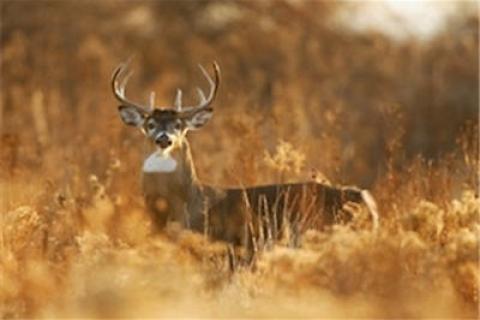
October 23, 2012
We all know that hunting conditions and how it affects your approach changes day to day. So let me tell you a little bit about what I’m looking at here in Northwest Tennessee as I get ready to go bowhunting for whitetail with RedHead arrows and BlackOut broadheads.
It’s an unusually warm day today, around 80 degree, and we’re in the pre-rut phase. The bucks, particularly the young bucks, are nosing around, scraping, breaking up from their groups. There are plenty of acorns around and food is aplenty, though the deer I’m seeing aren’t too focused on one source and they are eating a variety of foods.
The older class bucks are not as active yet, though I have spotted a few mature bucks on my trail cameras over the Summer. The deer are bedding early and I am not seeing a lot of activity in the morning, but rather in the afternoon.
 Today I’m hunting from a treestand as well as a RedHead Ground Blind. I’m setting up along field edges where the dos are feeding and where the bucks are scraping around. The wind is shifting a lot but I’m setting up along the north side.
Today I’m hunting from a treestand as well as a RedHead Ground Blind. I’m setting up along field edges where the dos are feeding and where the bucks are scraping around. The wind is shifting a lot but I’m setting up along the north side.
I’m on the lookout for a mature buck around four years old. That can be a little difficult in an area with such liberal bag limits. But I find bowhunting is a wonderful scouting tool because even if you don’t take a shot all day, you’re still watching and waiting and allowed to focus on the behavior of does, bucks, turkey and other wildlife.
If I can get a class buck, great, if not, it’s not a lost day. Any day spent hunting is a day well spent and you can always better hone your skills.
That’s what I want to emphasize, that the outline of my hunting approach today isn’t something that will would necessarily work last week and may not work next week. But what is important for hunters looking to take it to the next level is to take notice of the environment.
Ask yourself:
- What phase of rut are you seeing?
- Where are signs of the rut?
- Are you seeing big bucks cruise around or are anxious young bucks all you see?
- What food sources are attracting deer?
- Where is the wind coming from?
- When are deer most active?
The more you begin to internalize these questions and find the answers, the more you it just becomes a part of your hunting mindset, and the more effective (with less mental effort) you’ll become.
- 5097 views

